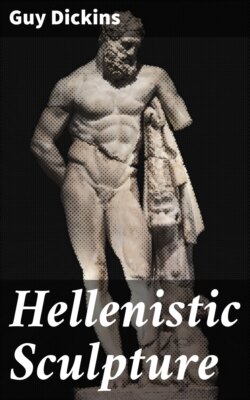Читать книгу Hellenistic Sculpture - Guy Dickins - Страница 3
На сайте Литреса книга снята с продажи.
PREFACE
ОглавлениеTable of Contents
Among the losses which Oxford has suffered from the war, none is more to be regretted than that of the author of this volume. As an undergraduate, twenty years ago, Guy Dickins gave up his intention of entering the Indian Civil Service in order to devote himself to the study of Classical Archaeology, an allegiance from which he never swerved. In 1904 he went as Craven Fellow to the British School of Athens, and for five years lived mostly in Greece, studying and exploring. In 1909 he returned to Oxford as a Fellow of St. John’s College, and Lecturer in Ancient History. In 1914 he was appointed University Lecturer in Classical Archaeology; but before he could take up the duties of the post the great call came, and he obeyed it at once. A most efficient and able company commander, he served in the King’s Royal Rifle Corps. In July 1916 he died of wounds received in the battle of the Somme.
Before the war Dickins had been occupied in tasks of research, and in preparation for a teaching career. He had published several papers, and a volume of the catalogue of the Acropolis Museum. He had visited most of the museums of Europe, and brought back a large collection of photographs, which his widow has presented to the Ashmolean Museum. He was especially interested in Greek sculpture, and had intended to collect materials for a history of art in the Hellenistic Age, a subject which has been neglected, but which is of the greatest importance. Several of his papers, such as those on the followers of Praxiteles and on Damophon of Messene, show in what direction his mind was working, though at the same time he was ready to take part in all the projects and the excavations of the School of Athens.
The present volume, alas, is the only fruit which the study of antiquity is likely to reap from such continued and thorough preparation. Every reader will regret that it was not written on a far larger scale. But it was planned as part of a complete history of ancient sculpture. No doubt, had he lived, Dickins would have rewritten it in a more complete form. But as it stands it is far too valuable to lose, full of suggestion, and pointing the way to important lines of discovery. In my opinion it contains the best that has been written on the subject; and one rises from the reading of it with a keen regret that the author could not bring his harvest to completion.
Dickins possessed in a high degree two qualities necessary for the best work in archaeology. He was distinctly original, always preferring to look at things in a light not borrowed from books or teachers but his own. And he was at the same time of cool judgement and strong in common sense. One of his fellow officers told me that whenever he was in doubt as to the course to be followed in attack or defence he consulted Dickins, and accepted his advice. He did not, like many young archaeologists, delight in starting brilliant hypotheses; but was ever content in coming nearer to the truth, and setting it forth in orderly and sober fashion. Such qualities would have made him an invaluable factor in the teaching of archaeology in England. I am told that the undergraduates of his college always felt that he set before them a high standard, and had no sympathy with anything which was pretentious or meretricious. The same qualities appeared in two or three courses of lectures on recent excavation, which he gave at the Ashmolean Museum.
I add as an appendix a list of Dickins’s published works, with a summary of their purpose and contents. They are not great in extent; he was not a rapid worker; but every one of them is worthy of careful reading, and does something to advance our knowledge of Greek art and ancient life.
PERCY GARDNER.
